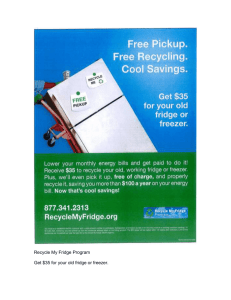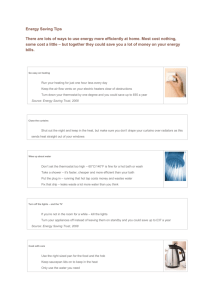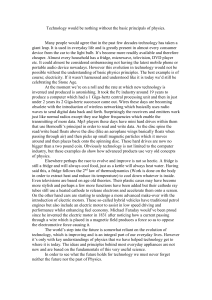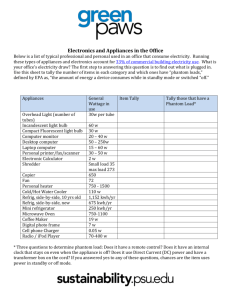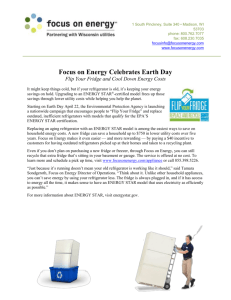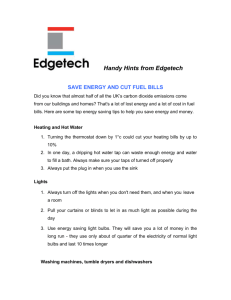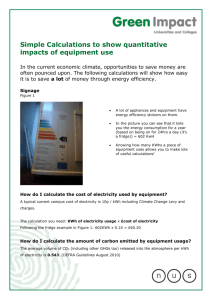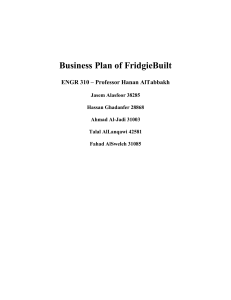Energy Efficiency
advertisement
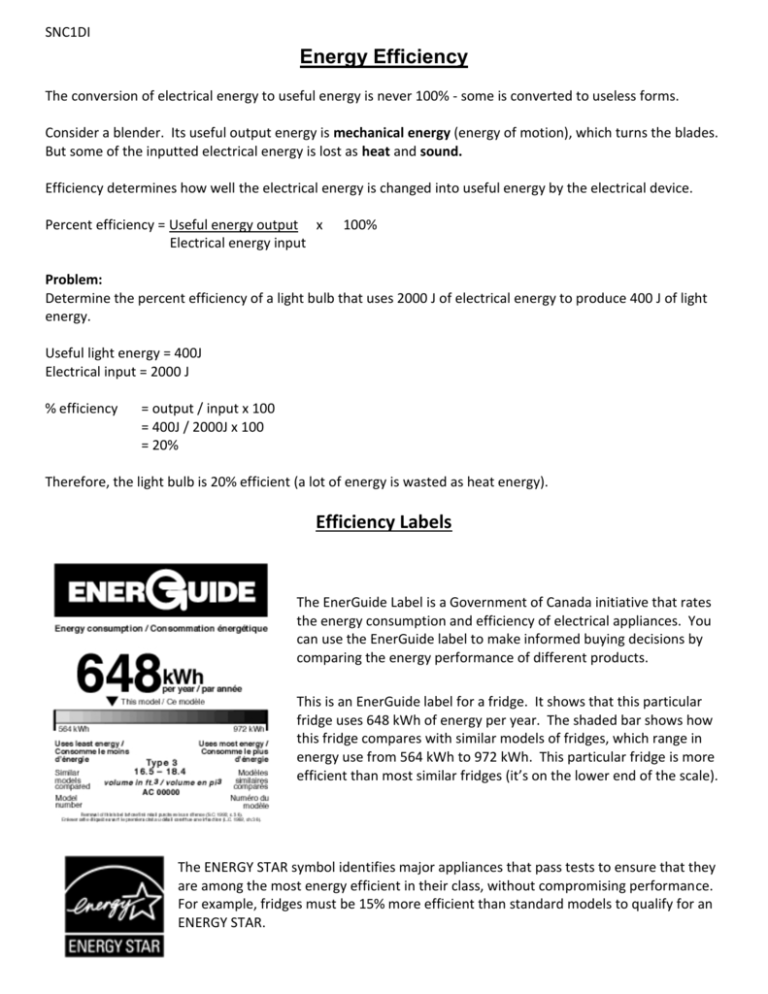
SNC1DI Energy Efficiency The conversion of electrical energy to useful energy is never 100% - some is converted to useless forms. Consider a blender. Its useful output energy is mechanical energy (energy of motion), which turns the blades. But some of the inputted electrical energy is lost as heat and sound. Efficiency determines how well the electrical energy is changed into useful energy by the electrical device. Percent efficiency = Useful energy output x Electrical energy input 100% Problem: Determine the percent efficiency of a light bulb that uses 2000 J of electrical energy to produce 400 J of light energy. Useful light energy = 400J Electrical input = 2000 J % efficiency = output / input x 100 = 400J / 2000J x 100 = 20% Therefore, the light bulb is 20% efficient (a lot of energy is wasted as heat energy). Efficiency Labels The EnerGuide Label is a Government of Canada initiative that rates the energy consumption and efficiency of electrical appliances. You can use the EnerGuide label to make informed buying decisions by comparing the energy performance of different products. This is an EnerGuide label for a fridge. It shows that this particular fridge uses 648 kWh of energy per year. The shaded bar shows how this fridge compares with similar models of fridges, which range in energy use from 564 kWh to 972 kWh. This particular fridge is more efficient than most similar fridges (it’s on the lower end of the scale). The ENERGY STAR symbol identifies major appliances that pass tests to ensure that they are among the most energy efficient in their class, without compromising performance. For example, fridges must be 15% more efficient than standard models to qualify for an ENERGY STAR.


